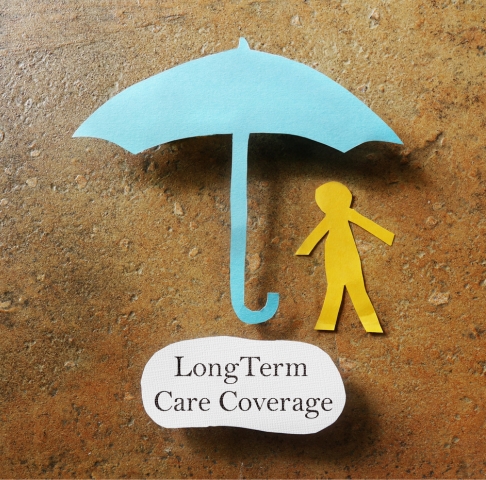During my recent catch-up with three friends who are glowing mothers-to-be, our conversations veered from popular antenatal classes to hospitals to deliver at, birth plan essentials and childcare arrangements after baby is born. A not-so-hot topic was maternity insurance, also known as pregnancy insurance or prenatal insurance.
For many pregnant mums, it’s something alien which they ignore, especially when they already have medical insurance. “Is maternity insurance even necessary?” is a common refrain. On their behalf, I decided to find out the answer.
Here’s what I’ll cover in this blog post:
- What are some unexpected costs during pregnancy and childbirth?
- What is medical insurance?
- What is maternity insurance?
- How do medical insurance and maternity insurance differ in the way they work, and the maternity coverage provided?
- How do you decide if you need maternity insurance?
Unexpected costs during pregnancy and childbirth
While there are many new government incentives to encourage Singaporeans to have children, starting a family can still be expensive. What are some unexpected costs that could arise during pregnancy and childbirth?
Most pregnancies go smoothly other than common pregnancy discomforts like back aches, swollen feet and heartburn. However, complications can arise during pregnancy, delivery or post-childbirth.
Some of the common ones are:
- pre-eclampsia or high blood pressure, which puts the mother at risk of eclampsia or coma and is life-threatening;
- post-birth anaemia, where the mother loses excessive amounts of blood during or after delivery; and
- neonatal jaundice, where the baby’s skin and the white parts of their eyes turn yellowish because of high levels of bilirubin in the blood, which 60 to 80 percent of newborns in Singapore show signs of.
In other cases, a child may need stem cell transplant surgery due to blood disorders or present developmental delays like autism. In extreme cases, the mother or child could die.
The costs associated with these complications can go up to hundreds of thousands of dollars, and intensive care unit fees for babies aren’t cheap. In one reported case, a mother with pre-eclampsia went into early labour in her fifth month of pregnancy resulting in a 13-month hospital stay for the baby and a bill close to S$200,000.
Pregnant? Check out our handy Womb to Delivery Room checklist to prepare for your baby’s arrival.
The difference between medical insurance and maternity insurance
To figure out if you need maternity insurance when you already have medical insurance, it’s good to start by understanding what each one does. Note that both maternity and medical insurance do not cover antenatal check-ups and scans, normal hospitalisation charges or delivery fees.
What is medical insurance?
It’s a type of insurance plan that’s mainly illness related and covers the cost of the insured person’s healthcare bills, such as hospital ward charges, surgery fees as well as outpatient dialysis. It generally works by reimbursing the fees paid for your medical bill after you’ve consumed medical services, helping to minimise your hospital-related expenses. MediShield Life and Integrated Shield Plans are examples of medical insurance, and they cover certain serious pregnancy- and delivery-related complications.
What is maternity insurance?
It is a type of life insurance plan that protects both mother and child (or children in multiple pregnancies) against unexpected events during pregnancy, delivery and post-delivery. It typically provides a lump-sum payout for pregnancy complications as well as congenital illnesses which are conditions present from birth. It also provides some payouts for hospitalisation, a.k.a. “hospitalisation income”, resulting from pregnancy complications and admission into neonatal intensive care unit. It works by giving you cash to help with any future costs resulting from specific conditions.
Table 1: General summary of differences between a medical insurance plan and maternity insurance plan
Maternity-related coverage differences between maternity insurance and medical insurance
Both maternity insurance and medical insurance offer financial protection against unexpected events during pregnancy and childbirth, but to different extents. Key differences also make each plan particularly useful in specific situations.
What maternity coverage do you get with medical insurance?
Let’s use the national MediShield Life scheme and Integrated Shield Plans as examples of medical insurance for our comparison between medical insurance and maternity insurance.
All Singaporeans and Permanent Residents are automatically covered under MediShield Life from birth for life, even if they have congenital and neonatal conditions. As it’s meant to be a type of affordable basic insurance, there are coverage limits for various treatments, hospitalisation, surgery and outpatient treatments, and an overall annual coverage limit of S$150,000. You’d have to pay out of pocket for any fees outside these limits.
If an expectant mum has an Integrated Shield Plan, which is an optional health coverage purchased from private insurers that gives higher coverage than MediShield Life, she gets greater coverage and additional benefits. However, this applies to the mother only – she’d have to purchase a separate Integrated Shield Plan for her baby to receive enhanced benefits too.
MediShield Life/IP coverage for mothers: Includes inpatient treatment for a list of serious pregnancy- and delivery-related complications
MediShield Life/IP coverage for babies: Includes inpatient treatment for a list of serious conditions present from birth, such as cleft palate, hole in heart and Down’s syndrome
What maternity coverage do you get with maternity insurance?
As maternity insurance is designed for a pregnant mother’s needs, you can expect to be covered for more pregnancy and childbirth-related complications. Both the mother and child are covered under a single maternity plan. The full benefits list varies from insurer to insurer, so you can shop around for a plan that covers the risks you’re most concerned about.
Maternity insurance coverage for mothers: A list of pregnancy complications, hospital care and death
Maternity insurance coverage for babies: A list of congenital illnesses, developmental delays, hospital care and death
In general, there are four unique benefits that maternity plans provide which medical plans don’t:
- Lump-sum cash in the event of pregnancy complications and congenital illness: If the mother or child is diagnosed with any one of the covered pregnancy complications or congenital illnesses, which may not require hospitalisation, there will be a lump-sum payout. You could use the cash any way you choose, such as paying for recovery treatments, medical bills that exceed your medical insurance limit or buying assistive devices. It could also allow you or your spouse to take temporary leave from work to recuperate or look after your child.
- Coverage for treatments not usually covered by medical plans: Most plans in the market cover outpatient phototherapy due to severe neonatal jaundice. Some also cover stem cell treatment surgery which could be needed for blood disorders.
- Payout for developmental delay in the child: Plans give a payout for developmental delays which may only be diagnosed when a child is a little older, such as being unable to say simple words like “papa” or “mama” by a certain age.
- Lump-sum cash upon death: If the mother or child dies during the coverage period, there will be a payout.
How do you decide if maternity insurance is necessary?
You may feel your medical insurance is adequate if:
- you haven’t exhausted your annual MediShield Life or Integrated Shield Plan claim limit and have sufficient financial resources to cover the cost of any pregnancy-related complications that exceed this;
- you won’t need to use this coverage for planned hospitalisations or surgeries for the rest of the year;
- you’re satisfied with the pregnancy coverage offered by this plan; or
- you already have life insurance for yourself.
You may want maternity insurance on top of your medical plan if:
- you want more extensive coverage for expectant mums and babies that covers specific pregnancy, delivery and post-childbirth complications;
- you want to cover your child for developmental delays;
- you want the added financial security of a lump-sum cash payout in the event of specific pregnancy complications and congenital illnesses – even if they don't require hospitalisation; or
- you want financial assistance upon hospitalisation, and death coverage for you and your baby.
Make the best call for your baby and you
Pregnancy is an exciting time, and it’s normal to have jitters about things like unexpected health emergencies, labour pain management and giving your little one the best start in life.
Having financial protection during pregnancy gives you the assurance that if things don't go as planned, you won't be burdened by money matters. While there are some overlaps in coverage offered by medical insurance plans and maternity insurance plans, there are also distinct benefits in having a separate maternity plan on top of your medical plan.
Consider your needs and how your existing medical plan covers you and your baby. For some parents-to-be, having a maternity plan could help you feel more prepared for parenthood, so you can take on this life-changing journey with greater confidence.








